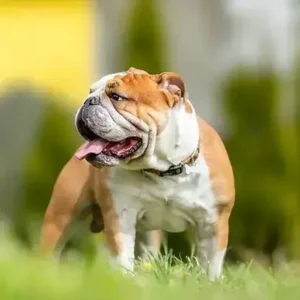Cavalier King Charles Spaniel History/Origin
The Cavalier King Charles Spaniel, though officially recognized less than a century ago, descends from toy spaniels that have been companions to royalty and nobility for centuries. These spaniels were depicted in 16th- to 18th-century paintings by artists like Van Dyck and Gainsborough. These purebred dogs gained prominence under King Charles II, who adored them and allowed them in all public places, including Parliament.
After his death, the breed’s popularity declined, and they were crossbred with Pugs, leading to a shorter nose and domed head. However, at Blenheim Palace, a strain of red and white toy spaniels continued to be bred, which are now known as Blenheim Cavaliers.
Cavalier King Charles Spaniel History- Source: AKC.org
In the 1920s, American Roswell Eldridge sought to revive the breed resembling the old paintings. He offered a cash prize at the Crufts Dog Show, and in 1928, a dog named Ann’s Son won.
This led to renewed interest and the formation of a breed club, which chose the name Cavalier King Charles Spaniel to differentiate it from the flatter-faced King Charles Spaniel. The breed was recognized by the American Kennel Club under Working Group.
Mrs. Amice Pitt- Source: AKC.org
In the U.S., Cavaliers were imported in the 1940s, and Mrs. Sally Lyons Brown founded the Cavalier King Charles Spaniel Club, USA (CKCSC, USA) in 1954. The club maintained strict breeding ethics and resisted full AKC recognition to avoid commercial breeding.
In 1995, the American Cavalier King Charles Spaniel Club (ACKCSC) became the parent club for the breed within the AKC, while the CKCSC, USA remains an independent registry.
Cavalier King Charles Spaniel Personality
Cavalier King Charles Spaniels are one of the dog breeds known for their warm, affectionate, and friendly personalities. These dogs are incredibly sociable, enjoying the company of people and other animals alike. They are often described as gentle and loving, making them ideal companions for families, individuals, and the elderly.
Cavaliers are eager to please and are typically easy to train, with a temperament that ranges from playful and energetic to calm and relaxed. Their adaptability allows them to fit well into various living environments, whether it be a bustling household or a quiet apartment.
- Training challenges
Training a Cavalier King Charles Spaniel can present some challenges despite their generally eager-to-please nature. While they are intelligent and quick learners, they can also be somewhat stubborn or easily distracted, particularly by interesting scents or the presence of other animals. Consistency and patience are key when training these dogs.
Positive reinforcement techniques, such as treats and praise, work well, but it’s important to keep training sessions short and engaging to maintain their attention. Additionally, Cavaliers can be sensitive to harsh corrections, so a gentle and encouraging approach is essential.
Cavalier King Charles Spaniel Physical Appearance
The Cavalier King Charles Spaniel boasts a striking physical appearance characterized by elegance and charm. With its well-proportioned body and graceful movements, this breed exudes an air of sophistication. Its head is small and slightly rounded, adorned with expressive, dark eyes that convey warmth and affection. Long, pendulous ears frame the face, adding to its endearing appeal.
- Size
The Cavalier King Charles Spaniel is a compact yet robust breed, standing between 12 to 13 inches tall at the shoulder and weighing approximately 13 to 18 pounds.
- Coat color
The Cavalier King Charles Spaniel boasts a medium to long, wavy, and silky coat, adding to its overall elegance. Adult Cavaliers typically display feathering on their ears, chest, legs, feet, and tail. The Cavalier King Charles Spaniel’s coat comes in various colors, including Ruby, Blenheim, or tricolor.
Cavalier King Charles Spaniel Gender Differences
Males are typically 1 to 2 inches larger than females. However, apart from this slight size discrepancy, Cavalier King Charles Spaniels generally do not display significant gender-specific differences. Both males and females share similar temperaments, coat characteristics, and overall physical traits. This makes them equally delightful companions regardless of sex.
Cavalier King Charles Spaniel Feed/Nutrition
Feeding your adult Cavalier King Charles Spaniel means giving them 1/2 to 1 cup of dry food per day, split into two meals. The amount depends on their size, age, and how active they are. Make sure they stay at a healthy weight by measuring their food and feeding them twice a day.
You can check if they’re overweight by looking at them and feeling their ribs. To keep their ears clean during meals, consider using a snood or hair scrunchy.
Also, use bowls with a narrow diameter to prevent their ears from getting dirty. Blueberries can be a great addition to their diet, providing antioxidants and vitamins as a healthy snack.
Cavalier King Charles Spaniel Health
Cavaliers are generally healthy, but like all breeds, they’re prone to certain health problems. Not all Cavaliers will develop these diseases, but it’s crucial to be aware of them if you’re considering this breed.
- Mitral Valve Disease: Symptoms include a heart murmur that worsens over time, leading to heart failure. Preventive measures include regular veterinary check-ups to monitor heart health and early detection of any murmurs. Maintaining a healthy weight and providing regular exercise can also support cardiovascular health.
- Syringomyelia: Symptoms range from mild discomfort to severe pain and partial paralysis, often characterized by sensitivity around the head, neck, or shoulders, and frequent scratching without physical contact. Preventive measures include responsible breeding practices to reduce the risk of passing on the condition genetically.
- Episodic Falling: Symptoms can vary from mild, occasional falling episodes to severe, seizure-like episodes. Preventive measures involve responsible breeding practices to minimize the incidence of the condition.
- Hip Dysplasia: Symptoms include lameness, difficulty rising, and decreased range of motion in the hip joints. Preventive measures focus on maintaining a healthy weight to reduce stress on the joints and provide moderate, low-impact exercise to support muscle strength and joint stability.
- Patellar Luxation: Symptoms include intermittent limping or skipping steps while walking. Preventive measures involve maintaining a healthy weight to reduce strain on the joints and providing regular, moderate exercise to strengthen muscles and support joint stability.
- Keratoconjunctivitis Sicca: Symptoms include redness, discharge, and discomfort in the eyes due to reduced tear production. Preventive measures include regular veterinary check-ups to monitor eye health and early detection of any signs of dry eye. A balanced diet with omega-3s and minimizing environmental irritants can help keep your dog’s eyes healthy.
Cavalier King Charles Spaniel Care and Grooming
Cavaliers are relatively low-maintenance in terms of grooming. They typically require brushing or combing three to four times a week, with baths as needed, especially if they spend a lot of time outdoors or on furniture. It’s essential to pay attention to the feathered hair on their ears and legs, as it’s prone to tangling. Regularly check these areas for mats and gently comb them out.
Trim their nails monthly to keep them at a comfortable length and prevent scratching. It’s beneficial to start grooming and handling your Cavalier when they’re young to make it a positive experience for them.
They are both playful and easy to train, making them enjoyable and manageable companions. Despite their playful nature, they possess a relaxed demeanor and moderate energy level, striking a perfect balance between being active and laid-back. Additionally, house training your dog is essential to ensure they develop good habits and maintain a clean environment.
Cavalier King Charles Spaniel Rescue Groups
If you’re considering adopting a Cavalier King Charles Spaniel, there are numerous rescue groups specifically dedicated to this breed. These organizations focus on rescuing Cavaliers and finding them loving forever homes.
Cavalier King Charles Spaniel Price
The price of a Cavalier King Charles Spaniel typically ranges from $1,800 to $3,500, depending on factors such as breeder reputation, pedigree, and location.
Choosing a reputable dog breeder is one of the most significant decisions you’ll make when bringing a new dog into your life. Reputable breeders prioritize breeding healthy, well-socialized puppies that become excellent companions.
Interesting Facts
- These Spaniels were so beloved by British royalty, especially King Charles II, that they were often depicted in royal portraits and even allowed in the royal courts.
British royalty- Source: AKC
- Cavaliers are available in four distinct colors, each with its distinctive name. These include Prince Charles (tri-color), King Charles (black and tan), Ruby (mahogany), and Blenheim (chestnut and white).
- The distinctive Blenheim coloration in Cavaliers is named after Blenheim Palace, where a particular strain of these spaniels was bred for generations by the Dukes of Marlborough.
- In “Sex and the City,” Cavalier King Charles Spaniels made an appearance.
Sex and the City- Source: IMDb
Best For
Cavalier King Charles Spaniels make wonderful pets for individuals or families who enjoy affectionate companionship. Their gentle nature and love for human interaction make them especially suitable for households with children or other pets. Additionally, their adaptability to various living situations makes them ideal for both spacious homes and cozy apartments.
Top Names
| Male Cavalier King Charles Spaniel Names | Female Cavalier King Charles Spaniel Names |
| Winston | Bella |
| Charlie | Daisy |
| Max | Rosie |
| Oliver | Molly |
| Teddy | Lucy |









 Cavalier King Charles Spaniel History- Source:
Cavalier King Charles Spaniel History- Source:  Mrs. Amice Pitt- Source:
Mrs. Amice Pitt- Source: 

 Blenheim Cavalier King Charles Spaniel- Source:
Blenheim Cavalier King Charles Spaniel- Source:  Prince Charles (tri-color)- Source:
Prince Charles (tri-color)- Source:  King Charles (black and tan)- Source:
King Charles (black and tan)- Source:  Ruby Cavalier King Charles Spaniel- Source:
Ruby Cavalier King Charles Spaniel- Source: 
 British royalty- Source:
British royalty- Source:  Sex and the City- Source:
Sex and the City- Source: 






